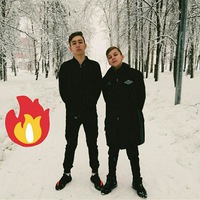
Почему именно первая строка дана форма словп хвоя?хвойная,хвоистый,хвоя
 0
0
 0
0
Ответы на вопрос
 Внимание! Ответы на вопросы дают живые люди. Они могут содержать ошибочную информацию, заблуждения, а также ответы могут быть сгенерированы нейросетями. Будьте внимательны. Если вы уверены, что ответ неверный, нажмите кнопку "Пожаловаться" под ответом.
Внимание! Ответы на вопросы дают живые люди. Они могут содержать ошибочную информацию, заблуждения, а также ответы могут быть сгенерированы нейросетями. Будьте внимательны. Если вы уверены, что ответ неверный, нажмите кнопку "Пожаловаться" под ответом.

 0
0
 0
0

Explanation of the Form "Хвоя"
The word "хвоя" is in the feminine gender in Russian. This is because it refers to a type of plant, and in Russian, nouns related to plants often take the feminine gender. The word "хвоя" is used to describe the needle-like leaves of coniferous trees, and it is a common term in botany and forestry.
In Russian, adjectives must agree with the gender of the noun they modify. Therefore, when describing something related to "хвоя," such as "хвойная" or "хвоистый," the adjectives also take the feminine form to match the gender of the noun.
Usage of "Хвоя" in Different Contexts
- Хвоя (хвойные деревья): "Хвоя" refers to the needle-like leaves of coniferous trees, such as pine, spruce, fir, and cedar. These trees are known for their evergreen foliage, which consists of "хвоя."
- Хвойная (хвойные леса): The term "хвойная" is used to describe forests dominated by coniferous trees. These forests are characterized by the prevalence of "хвоя" and are important for their ecological and economic significance.
- Хвоистый (хвоистые растения): "Хвоистый" is an adjective used to describe plants or objects that have characteristics resembling or related to "хвоя." It can refer to the texture, appearance, or other qualities associated with coniferous foliage.
In summary, the use of the form "хвоя" and its related forms in Russian language is primarily based on the gender agreement with the noun it modifies and is commonly used in the context of coniferous trees and related vegetation.
 0
0
 0
0
Топ вопросов за вчера в категории Русский язык
Последние заданные вопросы в категории Русский язык






-
Математика
-
Литература
-
Алгебра
-
Русский язык
-
Геометрия
-
Английский язык
-
Химия
-
Физика
-
Биология
-
Другие предметы
-
История
-
Обществознание
-
Окружающий мир
-
География
-
Українська мова
-
Информатика
-
Українська література
-
Қазақ тiлi
-
Экономика
-
Музыка
-
Право
-
Беларуская мова
-
Французский язык
-
Немецкий язык
-
МХК
-
ОБЖ
-
Психология
-
Физкультура и спорт
-
Астрономия
-
Кыргыз тили
-
Оʻzbek tili














